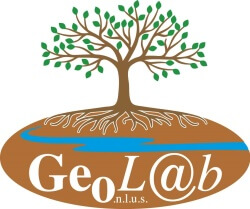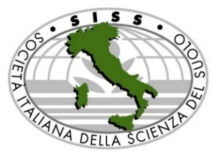Integrated geophysical investigation of flooding within the campus of Federal College of Education (Technical), Omoku and its environs
DOI:
https://doi.org/10.6092/issn.2281-4485/20808Keywords:
geo-electric , ERT, heterogeneity, transverse resistivity, longitudinal resistivityAbstract
This study investigates flooding within the campus of the Federal College of Education (Technical), Omoku, and its environs using integrated geophysical methods. Geo-electric resistivity (VES) and Electrical Resistivity Tomography (ERT) were employed to characterize subsurface properties that influence water retention, drainage, and flooding susceptibility. The VES analysis delineated four geo-electric layers with resistivity values ranging from 57.9 to 32,936.7 Ωm, revealing significant subsurface heterogeneity. The topsoil (layer 1) exhibited variable resistivity (86.7–824.4 Ωm), indicating mixed sandy and clayey materials with poor drainage in low-resistivity zones. The second and third layers demonstrated variable thickness and resistivity, reflecting saturated zones prone to water retention and areas with better drainage properties. The fourth layer, likely compact bedrock, exhibited high resistivity, acting as a barrier to water flow and contributing to surface runoff. Secondary geo-electric parameters including reflection coefficients, transverse resistivity, longitudinal resistivity, and anisotropy, provided additional insights. Low resistivity and high anisotropy zones indicated water-saturated or clay-rich materials associated with flood-prone areas. High resistivity and low anisotropy corresponded to better-draining zones with sandy or gravelly materials. ERT profiles complemented the VES results by mapping lateral and vertical variations in resistivity. Low-resistivity zones in the upper subsurface were linked to water-saturated soils, obstructing drainage and increasing flood risk. High-resistivity regions indicated less permeable materials that could exacerbate runoff and surface water accumulation. The study concludes that the interplay of subsurface heterogeneity, saturated zones, and impermeable layers significantly influences flooding in the area. The findings provide critical data for flood risk management and infrastructural planning, highlighting the need for effective drainage systems and soil stabilization measures in vulnerable regions.
References
ADABANIJA M.A., OLADUNJOYE M.A. (2014) Inve-stigating internal geometry of a Flood Plain in Basement Complex Terrain of South-western Nigeria using Electrical Resistance Tomography. International Journal of Multidi-sciplinary and Current Research, 2: 925−931.
ASFAHANI J. AL FARES W. (2021) Alternative vertical electrical sounding technique for hydraulic parameters esti-mation of the quaternary basaltic aquifer in Deir Al Adas area, Yarmouk Basin, Southern Syria. Acta Geophysica. 69: 1901–1918. https://doi.org/10.1007/s11600-021-00646-x
EKANEM A.M. (2020) Georesistivity modelling and appraisal of soil water retention capacity in Akwa Ibom State University main campus and its environs, Southern Nigeria. Modelling Earth System and Environment, 6:2597−2608. https://doi.org/10.1007/s40808-020- 00850-6
EL-SAADAWY O. GABER A. OTHMAN A. ABOTALIB A.Z., EL BASTAWESY M. ATTWA M. (2020) Modeling Flash floods and induced recharge into alluvial aquifers using multi-temporal remote sensing and electrical resistivity imaging. Sustainability, 12:10204 https://doi.org/10.3390/su122310204.
EL-ZEIN A, AHMED T, TONMOY F. (2021) Geophy-sical and social vulnerability to floods at municipal scale under climate change: The case of an inner-city suburb of Sydney. Ecological Indicators, 121: 106988.
https://doi.org/10.1016/j.ecolind.2020.106988
FLATHE H. (1955) Possibilities and limitations in applying geoelectrical methods to hydrogeological problems in the coastal area of northwest Germany. Geophysical Prospect 3(95):110
https://doi.org/10.1111/j.1365-2478.1955.tb01363.x
GEORGE N.J., IBUOT J.C., EKANEM A.M., GEORGE A.M. (2018) Estimating the indices of inter- transmissibility magnitude of active surficial hydrogeologic units in Itu, Akwa Ibom State, Southern Nigeria. Arabian Journal of Geosciences, 11(6):1–16. https://doi.org/10.1007/s12517-018-3475-9
GERNEZ S., BOUCHEDDA A., GLOAGUEN E., PA-RADIS D. (2019) Comparison between hydraulic conducti-vity anisotropy and electrical resistivity anisotropy from tomography inverse modelling. Frontiers in Environmental Science, 7:67. https://doi.org/10.3389/fenvs.2019.00067
GOLEBIOWSKI T., PIWAKOWSKI B., CWIKLIK. M. (2020) Application of the GPR and ERT methods for non-invasive examination of a flood dike. 9th Scientific-Technical Conference on Emobility, Sustainable Materials and Technologies (MATBUD), Oct 2020, Cracow, Poland. pp.01010, ff10.1051/matecconf/202032201010ff. ffhal-03322808f
HENRIET J. P. (1976). Direct application of Dar-Zarrouk parameters in ground water surveys. Geophysical Prospecting, 24: 344–353.
IBUOT J. C., GEORGE N. J., OKWESILI A. N., Obiora, D. N. (2019). Investigation of litho-textural characteristics of aquifer in Nkanu west local government area of Enugu State, southeastern Nigeria. Journal of African Earth Scien-ce, 153:197−207. doi.org/10.1016/j.jafrearsci.2019.03. 004
IBUOT J.C., OBIORA D.N., EKPA M.M., OKOROH D. O. (2017) Geoelectrohydraulic investigation of the surficial aquifer units and corrosivity in parts of Uyo L. G. A., Akwa Ibom State, Southern Nigeria. Applied Water Science, 7: 4705-4713. https://doi.org/10.1007/s13201-017-0632-3
IBUOT J.C., AKA M.U., INYANG N.J., AGBASI O.E. (2022) Georesistivity and physicochemical evaluation of hydrogeologic units in parts of Akwa Ibom State, Nigeria. International Journal of Energy and water Resources, 6. https.//doi.org/10.1007/s42108-022-00191-3
KAYODE J. S., ARIFIN M.H., KAMARUDIN M.K. (2019) The vulnerability of the aquifer units in the flood-affected areas of the east coast Peninsula Malaysia. Arabian Journal of Geosciences, 12: 146.
https://doi.org/10.1007/s12517-019-4323-2
KELLER G.V., FRISCHKNECHT F.C. (1966) Electrical methods in geoelectric prospecting. Pergamon Press 90–04.
KELLER G.V. FRISCHKNECHT F.C. (1982). Electrical methods in geophysical prospecting. London: Pergamon Press. Vol 10.
LOWRIE W. (1997) Fundamentals of Geophysics. Cam-bridge University Press, New York, NY.
MAILLET R.E. (1947) The fundamental equations of electrical prospecting. Geophysics 12:529–556.
NARENDRA B.H., SETIAWAN O., HASAN R.A., SIRE-GAR C.A., PRATIWI S.N., SUKMANA A., DHARMA-WAN I.W.S, NANDINI R. (2024) Flood susceptibility mapping based on watershed geomorphometric characte-ristics and land use/land cover on a small island. Global Journal of Environmental Science and Management, 10(1): 301-320. https://doi.org/10.22034/gjesm.2024.01.19
OBIORA D.N., IBUOT J.C. (2020) Geophysical asses-sment of aquifer vulnerability and management: A case study of University of Nigeria, Nsukka, Enugu State. Applied Water Science, 10: 1−11. Doi: 10.1007/s13201-019-1113-7
OBIORA D.N., IBUOT J.C. (2023) Electrical geophysical evaluation of susceptibility to flooding in University of Nigeria, Nsukka main campus and its environs, Southea-stern Nigeria. Journal of Groundwater Science and Engi-neering, 11(4):422-434. https://doi.org/10.26599/JGSE.2023.9280033
OKOROH D.O., IBUOT J.C. (2023) Assessment of aquifer properties, protectivity and corrosivity using resistivity method: a case study of Federal College of Education (Technical), Omoku. International Journal of Energy and Water Resources. https://doi.org/10.1007/s42108-023-00247-y
REIJERS T., PETTERS S. NWAJIDE C. (1997) The Niger Delta Basin. Sedimentary Basins of the World, 3, 151 -172. https://doi.org/10.1016/S1874-5997(97)80010-X
REYNOLDS J. M. (2011) An Introduction to Applied and Environmental Geophysics. John Wiley & Sons, Oxford, pp. 712.
SHAILAJA G, LAXMINARAYANA M, PATIL J.D., ERRAM V.C., SURYAWANSHI R.A. GUPTA G. (2016) Efficacy of anisotropic properties in groundwater exploration from geoelectric sounding over trap covered terrain. The Journal of Indian Geophysical Union, 20(5): 453–461.
SRIVANIT M. PATTANASRI S. PHICHETKUNBO-DEE N. MANOKEAW S. SITTHIKANKUN S. RIN-CHUMPHU D. (2024) Analysis of sensitive urban form indicators of flood susceptible prediction based on machine learning models. Global Journal of Environmental Science and Management, 10(4):1501-1518.
https://doi.org/10.22034/gjesm.2024.04.02
TAMUNOBERETON-ARI I., OMUBO-PEPPLE V.B., AMAKIRI A.R.C. (2014). Characterization and delineation of aquifer in part of Omoku, Rivers State, Nigeria. IOSR Journal of Applied Geology and Geophysics, 2(4):30–37. https://doi.org/10.9790/0990-0243037
TELFORD W.M., GELDART L.P., SHERIFF R.E. (1990) Applied Geophysics. Cambridge University Press, Cambridge.
WU Z., ZHOU Y., WANG H., JIANG Z. (2020) Depth prediction of urban food under different rainfall return periods based on deep learning and data warehouse. Science of the Total Environment, 716:137077. https://doi.org/10.1016/j.scitotenv.2020.137077
ZOHDY A.A.R., EATON G.P., MABEY D.R. (1974) Application of surface geophysics to groundwater investigations. US Geological Survey Techniques of Water–Resources Investigations, Book 2: 116 (Chapter D1).
Downloads
Published
How to Cite
Issue
Section
License
Copyright (c) 2025 Agada Idoko, Johnson C. Ibuot, Moses M.M. Ekpa

This work is licensed under a Creative Commons Attribution 4.0 International License.









